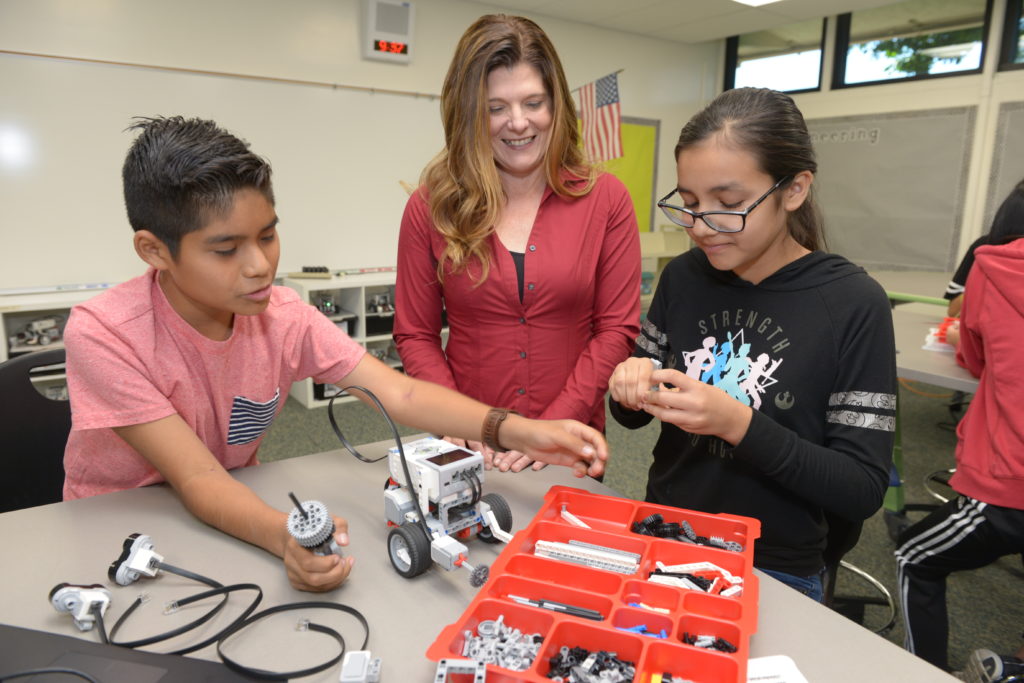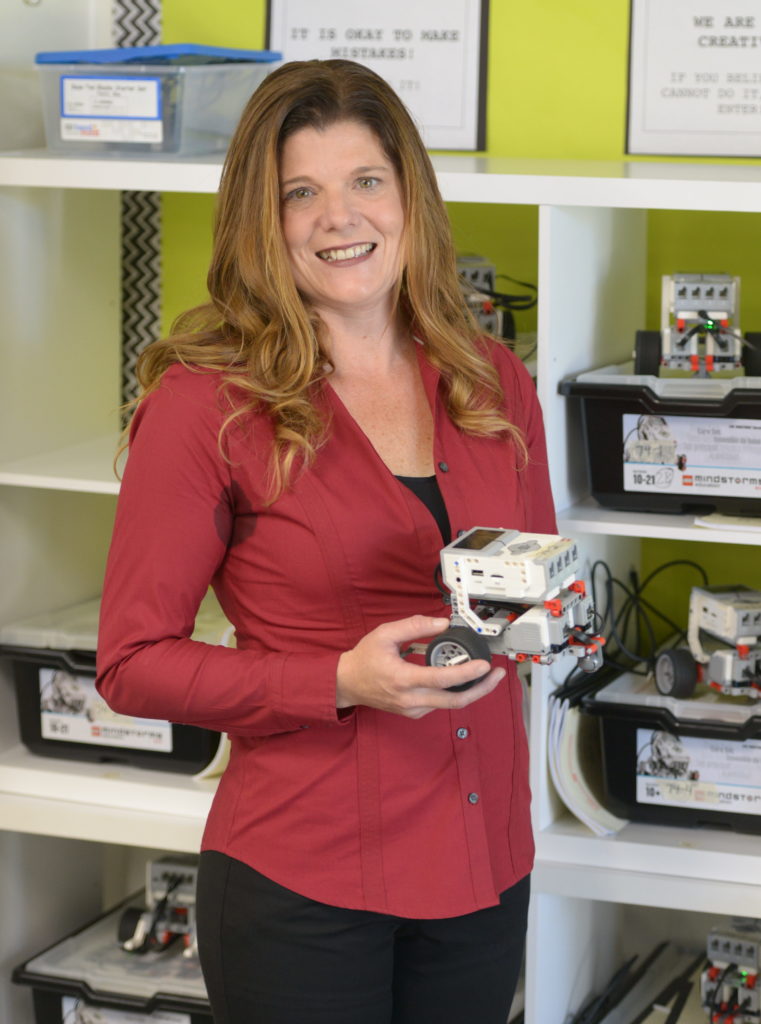
2018 Innovator, Garden Grove Education Association
Thanks to Brandy Peters’ efforts at Eisenhower Elementary School in Garden Grove, students are not only learning coding and robotics, they’re contenders in an annual area competition.
Peters, a fifth-grade teacher and school technology coordinator, was once a student in Garden Grove Unified School District. She knows firsthand that students here can accomplish great things.
She started an after-school program two years ago — funded by a CTA Institute for Teaching grant — where students build and program robots. Since then she has expanded the program, Coding and Robotics to Empower and Inspire Students, making a special effort to include girls, who are underrepresented in computer science. Much to her delight, the girls are thriving.
Peters’ goal is to close the digital divide so students can start preparing for high-paying careers in the tech industry.
Brilliant! Our 2018 Innovation Issue

These educators translate ideas, inventions and ways of doing things into something profound and often magical
Tricia Hyun, et al – English teachers find gamification a winner
Dan Frank – Manufacturing student success
Monique Flores & Ann Jensen – Program fosters freshman connection
Jessica Husselstein – Hitting just the right note
Virginia Marshall – Honoring black student achievement
Jesse Barnett – Students use cameras to get in touch with the world
Rose Borunda – Changing the California Indian history narrative
GALA – All-girls STEM school builds equity and skill
Dave Dein – Teaching truck-driving skills
Eisenhower has a predominantly Latino and low-income population, and many students may lack access to technology at home. Schools must level the playing field, she says.
“We have a number of students who are homeless or are living in multifamily apartments, but our kids have amazed everyone with the gifts they have for coding and robotics.”
This year there are two after-school robotics teams. In addition, Peters coordinates computer coding throughout the school day on Thursdays with colleagues. The lower grades build and program Dash and Dot robots. Fourth-graders build and program Lego EV3 Mindstorms robots. Fifth-graders learn Amazon Alexa programming skills — including creating voice commands. Sixth-graders code computers in Python — the same program used by NASA.

It would never have happened without collaboration. Peters initially sought help from Jason Chong, a teacher on special assignment in the Fullerton School District (FSD) and a member of the Fullerton Elementary Teachers Association. He connected her with Richard Woo, executive director of Cod.ED, who volunteers along with other Cod.ED staff to teach robotics and programming to Orange County students, with free professional development for teachers. He and his employees volunteer at Eisenhower on Thursdays.
Recently the school decided to create an AP Computer Science class for sixth-graders, which is essentially the same class that high school students take for college credit, and Cod.Ed will be assisting teachers with that, too.
I let the kids take the lead. I tell them to be fearless in the face of failure. I am learning so much from my students. they teach me new things every day.”
The programs are having a positive impact; Peters believes it’s no coincidence that students’ test scores have gone up since they started robotics and coding. She has grown professionally, as well.
“I don’t have a tech background,” she says. “I was a music major who got my master’s degree in reading, but I was willing to humble myself and learn [how to code], because I did not want to rob the kids of this opportunity. In some ways, I just let the kids take the lead. I tell them to be fearless in the face of failure. I am learning so much from my students. They teach me new things every day.” Students say they love the program.
“Programing a robot is fascinating,” says sixth-grader Mayte Lopez. “I love making them do stuff, like putting sensors on them so they can battle other robots. Coding also helps me with math, because you have to know how to do multiplication and division to program the robot.”
She adds, “Ever since I started doing it, I’ve thought it is something I want to earn a living at. What a great way to have fun and make money.”
For Peters, a highlight was watching her students in FSD’s annual Robot Nation competition. Students programmed EV3 robots to navigate a maze. Eisenhower Elementary School robots battled Fullerton robots to see whose robots could stay in a circle the longest before being shoved out. Although none of her students took first place, they held their own.
“I have never been prouder,” Peters says. “They were able to prove me right, work hard and be competitors. It just goes to show that kids facing obstacles can learn anything if they are given the chance to succeed.”
The Discussion 0 comments Post a Comment